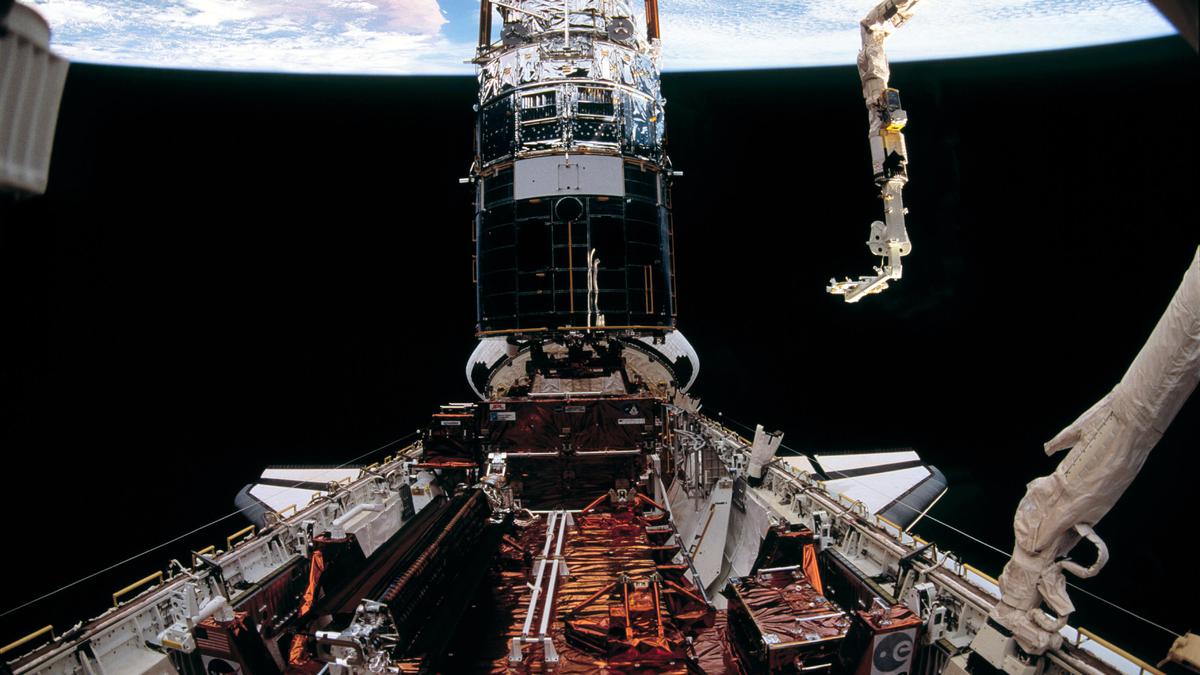
The first servicing mission to Hubble
The Hindu
On December 10, 1993, the Hubble Space Telescope was released back into orbit following its first servicing mission. Thirty years on, Hubble still remains in operation as it continues to explore the universe. A.S.Ganesh tells you more about the first mission to service this famous space telescope…
A super successful telescope, the Hubble Space Telescope has been in space since 1990. Stationed in orbit above the Earth, this telescope has sent hundreds of thousands of images in its over three decades of operation.
As Hubble is in orbit above the Earth, it allows for mesmerising views of the universe that have enhanced our overall understanding. This is because its vantage point enables it to escape the blurring and absorbing effects of the atmosphere.
Just after deployment in 1990, however, NASA’s scientists found out that the observatory’s primary mirror had a flaw. This impacted the quality of the first images that the telescope took, making them look fuzzy. The fact that Hubble was designed to enable astronauts to perform repairs while in orbit was the silver lining.
It is this feature – designed to be visited in space – along with the vision of those that conceived the mission that has led to its outstanding longevity. The planned visits not only provided an opportunity to repair and replace equipment, but also a chance to update the technology using new instruments. The first of such planned repair missions – Servicing Mission 1 (SM1) – took place in December 1993.
On December 2, 1993, the Space Shuttle Endeavour was launched from Florida. The seven astronauts on board were specially trained to rendezvous with the Hubble and perform repair on it while in orbit for the first time. Just a couple of days later, Endeavour’s robotic arm was used by mission specialist Claude Nicollier to capture Hubble and secure it gently to the shuttle’s cargo bay.
From that point onwards, five spacewalks were performed – one on each day from December 4-8. During the first spacewalk, astronauts Story Musgrave and Jeff Hoffman replaced some of Hubble’s gyroscopes and electrical control units for the gyros. In the second spacewalk performed by Tom Akers and Kathy Thornton, they replaced Hubble’s solar arrays with those that were better equipped at handling temperature changes.
Musgrave and Hoffman were in action during the third spacewalk again, this time replacing Hubble’s primary camera with a more advanced version. This included corrective mirrors that helped set right the telescope’s blurry vision. Akers and Thornton were at it again during the fourth spacewalk and they installed Corrective Optics Space Telescope Axial Replacement (COSTAR) – a telephone booth-sized device to help focus Hubble’s blurred vision for three instruments on board.

 Run 3 Space | Play Space Running Game
Run 3 Space | Play Space Running Game Traffic Jam 3D | Online Racing Game
Traffic Jam 3D | Online Racing Game Duck Hunt | Play Old Classic Game
Duck Hunt | Play Old Classic Game











